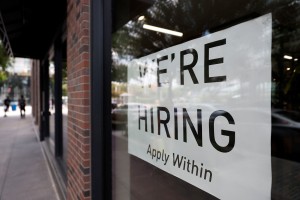The US job market remains robust, but is showing signs of cooling
The fever hasn’t broken yet for America’s employment market, but the temperature is coming down.
The economy added 263,000 jobs in September, the Bureau of Labor Statistics reported Friday, slightly more than economists had estimated.
While still robust, the headline number marks the second consecutive month of falling totals and points to a labor market slowdown — an outcome the Federal Reserve is seeking as it battles decades-high inflation.
“The job market is slowing gracefully, moderating jobs and wage growth smoothly as the Federal Reserve searches for signs of cooling inflation,” Daniel Zhao, senior economist for Glassdoor, said in a statement. “The job market is doing its part for a soft landing, keeping job gains positive and moderating wage gains.”
Still, one area of concern for the Fed is labor force participation, said Julia Pollak, chief economist at ZipRecruiter. Getting a larger share of people into the workforce can help bring down wage growth, one of several factors Fed officials fear could keep inflation high. The September report showed that labor force participation rate ticked down to 62.3% from 62.4% the month before.
“There was hope that the reopening of schools would have been a great moment for a restart” for many of the people who left the labor force during the pandemic, Pollak told CNN Business. “We may not see some of the people who left come back.”
The unemployment rate for September fell back to its half-century low of 3.5% from 3.7%, a result of the decline in the number of people looking for work.
“The Federal Reserve looks at this and other job market data, along with still hot inflation pressures, and will continue to believe it needs to boost interest rates,” Mark Hamrick, senior economic analyst with Bankrate, said in a statement.
“That appears to be a certainty for the upcoming meeting in early November. The magnitude of future rate hikes will become clearer as we get closer to the final two [policymaking] meetings of the year,” he said.
The Fed meets November 1-2 to discuss monetary policy and is widely expected to raise its benchmark interest rate by three-quarters of a percentage point for an unprecedented fourth time in a row.
This story is developing and will be updated.
The-CNN-Wire
™ & © 2022 Cable News Network, Inc., a Warner Bros. Discovery Company. All rights reserved.

